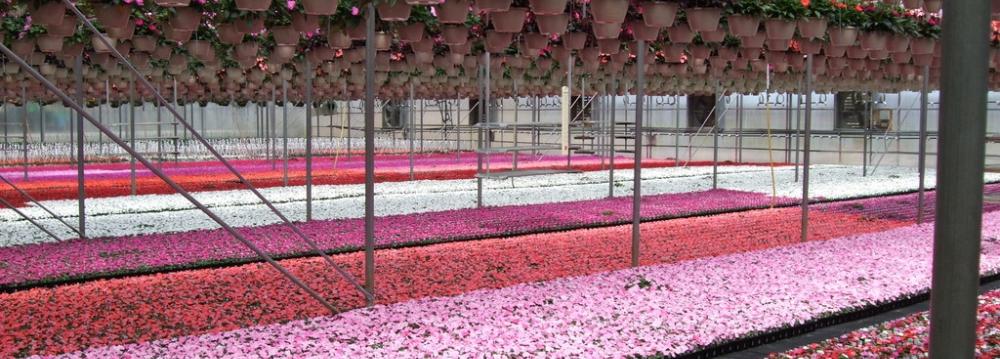Commercial floriculture in Iran does not have a long history and dates back to only 60 years ago.
About 10 trillion rials (more than $288.5 million at market exchange rate) have been invested in the field by the government and the private sector and close to 13,000 hectares of land have been designated for greenhouses across the country.
Tehran, Mahallat in Markazi Province, Dezful in Khuzestan Province and Tonekabon in Mazandaran Province are the four main terminals active in floriculture, the Persian daily Forsat-e Emrooz reported.
Per capita flower consumption in Iran is between six and 10 flowers annually. The figure amounts to 180 for Germans who happen to be the largest consumers of flowers in the world.
In Iran, the culture of gifting flowers and plants has not yet taken root and is confined to special occasions.
Close to 1% of the world’s flowers and ornamental plants are produced in Iran while only 0.01% of the international market belongs to Iranian exports, which stand at about $40 million annually.
According to experts, the figure can reach $800 million, provided the potential capacity in the field is fully unlocked.
Depending on the location of the greenhouse and the species cultivated, each hectare can create jobs for 10 to 15 people.
Hurdles to Industry’s Blossoming
Lack of proper transportation infrastructure, inadequate government support and excessive import of inputs such as seeds, scions and stems are among the main impediments to the growth of floriculture in Iran.
The smuggling of a variety of flowers and ornamental plants like bonsai, apart from harming domestic production, can transfer pests and diseases into the country.
“Most people active in the industry have started activities by using bank facilities. Yet the high interest rates on these facilities reduce the profit margins and at times incur major losses on business owners,” says Majid Seddiqi, a greenhouse owner.
He believes access to regional and international markets can significantly help production.
“This requires us to boost the quality of our products to keep up with international standards,” he said.
In Iran, production and research happen to be alienated. In case of horticulture in general and floriculture in particular, as opposed to farming of crops, which involves production of valuable plants cultivated in smaller plots of land, the issue of technical knowhow is more prominent.
“The reason why our flowers and ornamental plants are of inferior quality and perish easily is that most producers lack comprehensive knowledge about production. Most of them are in the job simply because it is a family business. Unfortunately, rarely a person who has studied agricultural engineering starts his own flower business,” says Saeed Eshqi, a lecturer in the Agriculture Department of Shiraz University.
According to Babak Jamali, an agricultural engineer, one of the main problems facing the floriculture industry in Iran is that producers tend to be negligent when it comes to post-harvest physiology, which focuses on technical measures that need to be taken after the products are harvested.
Some 40% of the commercially-cultivated flowers and plants are consumed domestically and 10% are exported. The remaining 50% goes to waste on the way from production to supply, which indicates a huge loss.
Proposed Solutions
“More government support will definitely lead to better prospects for the industry. By that I don’t just mean financial support. For instance, the Foreign Ministry can be of great help to industries when it comes to international marketing,” says Alireza Bonyanpour, a lecturer at Fars Agricultural and Natural Resources Research and Education Center.
According to Bonyanpour, the flower market in neighboring countries and those in Central Asia offer ample export opportunities. He believes export opportunities will encourage producers at home to elevate the quality of their products.
“Basically, in the global market, only producers whose products consistently abide by international standards can be successful,” he said.
According to the agriculture expert, one good solution is to have renowned flower producers from other countries, especially the Netherlands, enter the Iranian market.
“These foreign companies, by producing flowers and plants in Iran, will transfer the knowledge and technology required to produce flowers on par with international standards. They will also do the marketing themselves,” he said.


